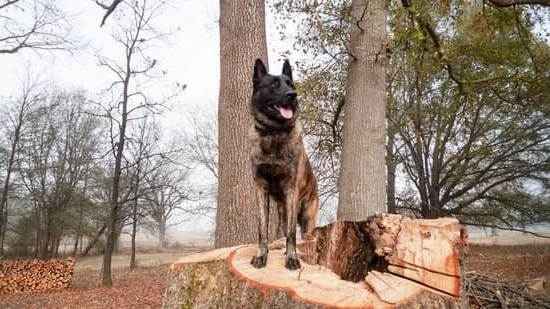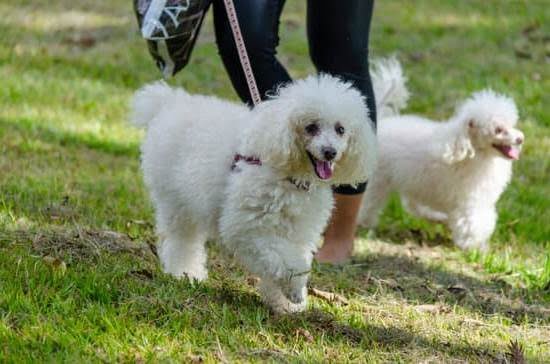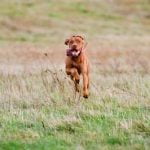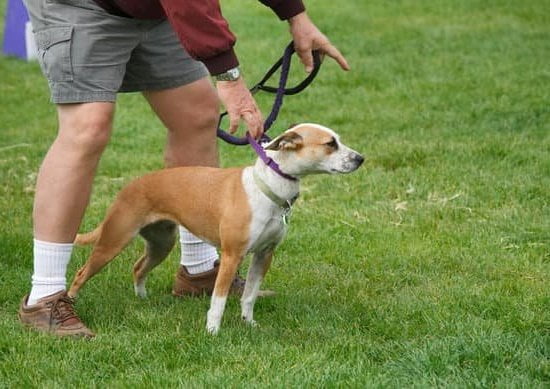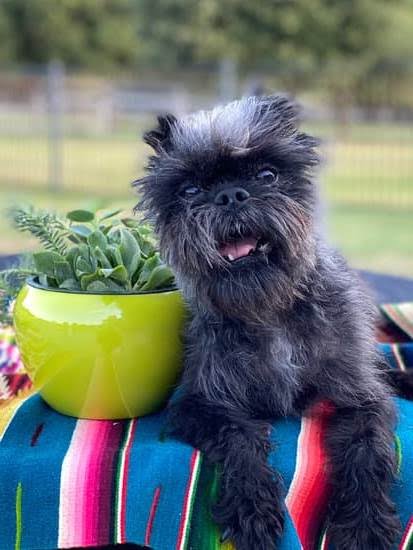Potty training a dog can be a challenging and often frustrating task. However, using a clicker as a training tool can make the process much easier and more effective. In this introductory section, we will explore why using a clicker for potty training is beneficial, introduce the concept of positive reinforcement, and provide an overview of the steps involved in using a clicker to train your dog.
One of the main benefits of using a clicker for potty training is its effectiveness in reinforcing desired behaviors. Clickers are precise and consistent in their sound, making them ideal for marking the exact moment your dog performs the desired behavior, such as eliminating in the designated area. This specific sound helps to create an association between the behavior and the reward that follows.
Positive reinforcement is another key concept when it comes to potty training with a clicker. This training method focuses on rewarding your dog for exhibiting desired behaviors rather than punishing or scolding them for making mistakes. By using positive reinforcement techniques such as treats or praise paired with the clicker sound, you can effectively communicate to your dog what behaviors you want them to repeat.
Throughout this article, we will guide you through each step involved in using a clicker to potty train your dog. From understanding the basics of clicker training to setting up a consistent routine and understanding how to associate the clicker sound with desired behavior, we will provide you with all the information you need to successfully potty train your furry friend. So let’s dive in and get started on this exciting journey towards successful potty training with a clicker.
Understanding the Basics of Clicker Training
Clicker training is a highly effective method for potty training a dog. In this section, we will explore the basics of clicker training and how it can be used to teach your dog to eliminate in the appropriate place. Understanding these foundational principles is crucial for successful potty training with a clicker.
Explanation of what a clicker is and how it works
A clicker is a small handheld device that makes a distinct clicking sound when pressed. It serves as a way to communicate with your dog, marking the exact moment they exhibit the desired behavior. The sound of the clicker bridges the gap between the behavior and the reward that follows. It acts as precise feedback for your dog, letting them know exactly which action earned them praise and treats.
How to introduce the clicker to your dog
Before you start using the clicker for potty training, it’s important to introduce your dog to this new tool. Begin by associating the sound of the clicker with something positive, such as treats or playtime. Start by clicking and immediately giving your dog a treat repeatedly. This helps them understand that every time they hear the click, good things happen. Over time, your dog will come to anticipate and appreciate this unique sound.
Importance of consistency and timing when using the clicker
Consistency and timing are key elements in successful clicker training. Consistency means using the same command cues, gestures, and rewards every time you ask your dog to perform a behavior. This ensures clarity for your furry friend and helps them understand what is expected of them.
Timing is also crucial in clicker training because it allows you to capture behaviors accurately. The moment after your dog exhibits the desired behavior, promptly press down on the clicker device while simultaneously offering praise or rewarding them with a treat. This way, your pet can clearly associate their action with the clicking sound followed by a reward. Practice and repetition will help you master the timing to ensure effective communication with your dog.
By understanding the basics of clicker training, you have set a solid foundation for successfully potty training your dog using this method. With consistency, patience, and proper timing, you can effectively communicate with your furry friend and encourage positive behaviors during the potty training process. In the next sections, we will delve deeper into setting up a potty training routine and preparing for potty training with a clicker.
Setting Up a Potty Training Routine
Establishing a consistent potty training routine is crucial when using a clicker to train your dog. Dogs thrive on routine and structure, so it’s important to create a schedule that includes regular potty breaks throughout the day. Here are some tips for setting up a successful potty training routine:
- Consistent Schedule: Dogs work best with a predictable routine, so aim to take them outside to their designated potty area at the same times each day. Generally, puppies should be taken out every 1-2 hours, while adult dogs can typically wait longer between potty breaks. Be sure to also take your dog out first thing in the morning, after meals, before bedtime, and after periods of play or exercise.
- Designated Potty Area: Creating a specific spot where your dog should eliminate will help reinforce proper bathroom habits. Choose an easily accessible outdoor area and consistently bring your dog to that spot for potty breaks. Use verbal cues such as “go potty” or “do your business” to associate those words with the desired behavior.
- Rewards and Reinforcement: Positive reinforcement plays a key role in potty training success. Each time your dog eliminates in the appropriate spot, be sure to immediately praise them and provide a small treat or favorite toy as a reward. This helps your dog understand that going potty outside is desirable behavior.
To help you establish a consistent routine, consider creating an HTML unordered list like this:
- Create a schedule by determining regular intervals for taking your dog outside
- Designate a specific spot where your dog should go potty
- Use verbal cues and rewards to reinforce desired behavior
Remember, consistency is key when setting up a potty training routine with clicker training. Stick to the schedule as closely as possible, provide ample opportunities for your dog to eliminate outside, and be patient as accidents may happen during the training process. With time and dedication, your dog will develop good bathroom habits and become fully potty trained.
Preparing for Potty Training with a Clicker
Necessary Supplies for Successful Potty Training
Before starting potty training with a clicker, it’s important to gather all the necessary supplies to ensure a smooth and successful training process. Firstly, you will need a clicker, which is a small handheld device that makes a distinct clicking sound when pressed. These can be purchased at pet stores or online.
It’s also important to have an ample supply of treats that your dog finds highly motivating. These treats will serve as positive reinforcement during the training process.
In addition to a clicker and treats, you will need some cleaning supplies for any accidents that may occur during the training period. Invest in a good-quality pet odor neutralizer or cleaner specifically designed for removing urine and feces odors from carpets or other surfaces. This will help eliminate any lingering scents that might encourage your dog to eliminate in the same spot again.
Establishing a Positive and Calm Training Environment
Creating the right environment for potty training using a clicker is crucial for success. Choose an area in your home where you want your dog to eliminate, such as outdoors or on pee pads indoors if that is your preference. Clear this space of any distractions, such as toys, food bowls, or other pets, as these can hinder your dog’s focus during training sessions.
A calm and quiet environment is essential during training sessions to help your dog concentrate on learning the desired behavior. Limit noise and disruptions in the surroundings while conducting potty training exercises with your canine companion.
Introducing Basic Commands before Potty Training
Before diving into potty training specifically, it’s beneficial to introduce basic commands like “sit” and “stay” to establish a foundation of obedience and communication with your dog. Teaching these commands early on not only aids in managing their behavior but also sets the stage for future learning experiences.
Using positive reinforcement techniques, such as giving treats and verbal praise when your dog successfully performs the basic commands, will help build a positive association with training sessions. With the introduction of these basic commands, your dog will start to understand that good behavior yields rewards. This understanding will translate into their potty training journey, reinforcing desired bathroom habits through the use of a clicker.
By preparing appropriately before starting potty training with a clicker, you set yourself and your dog up for success. Having the necessary supplies on hand, creating a positive training environment, and teaching basic commands establishes a strong foundation for effective clicker-based potty training.
Associating the Clicker with the Desired Behavior
Now that you understand the basics of clicker training and have set up a potty training routine, it’s time to move on to the next step – associating the clicker with the desired behavior. This is an important phase in your dog’s potty training journey as it helps them understand that the sound of the clicker means they have done something right.
To associate the clicker with the desired behavior, follow these step-by-step instructions:
- Timing is key: When your dog starts to eliminate in their designated potty area, immediately press the clicker to make a distinct sound. It’s important to time your click accurately so that your dog can clearly understand which behavior is being reinforced.
- Be consistent: Consistency is crucial during this phase of training. Every time your dog successfully eliminates in the appropriate spot, use the clicker to reinforce this behavior. By consistently clicking at the right moment, you are helping your dog make a positive association between going potty and hearing the clicker sound.
- Capture and reinforce: As you continue with this method, you can start capturing and reinforcing smaller steps towards successful elimination. For example, if your dog sniffs around or circles before eliminating, you can use the clicker to reinforce these behaviors as well.
During this phase of training, it’s important to avoid common mistakes such as clicking too late or too early, as this can confuse your dog and hinder their progress. Remember to always be patient and offer plenty of praise along with using the clicker for reinforcement.
As you consistently associate the clicker with successful bathroom trips, you will start noticing that your dog begins to understand what is expected of them. With enough repetition and reinforcement, they will eventually begin associating going potty in their designated area with positive rewards.
In the next section, we will explore how to effectively use the clicker to reinforce successful bathroom trips and gradually reduce its usage as your dog’s potty training progresses.
Using the Clicker to Reinforce Successful Bathroom Trips
Once you have successfully associated the clicker sound with the desired potty training behavior, it is time to use the clicker to reinforce your dog’s successful bathroom trips. This step is crucial in teaching your dog to understand that eliminating in the designated potty area is what you want from them.
Timing is key when using the clicker to reinforce successful bathroom trips. As soon as your dog finishes eliminating in their designated potty area, press the clicker and immediately follow it with a reward or treat. The click should happen right at the moment your dog finishes eliminating, as this helps create a strong association between the behavior and the positive reinforcement.
It is important to provide immediate reinforcement and rewards after clicking. This helps your dog understand exactly what they are being rewarded for. Choose high-value treats that your dog finds extremely motivating and rewarding. By consistently following the click with a reward, you are reinforcing your dog’s understanding of the desired behavior.
Once your dog consistently eliminates in their designated potty area with the help of the clicker, gradually reduce its use as a training tool. Start by clicking and rewarding every other successful bathroom trip, then every third, and so on until your dog no longer needs the clicker for reinforcement during potty breaks.
| Step | Instruction |
|---|---|
| 1 | Press the clicker as soon as your dog finishes eliminating in their designated potty area. |
| 2 | Immediately follow the click with a reward or treat. |
| 3 | Choose high-value treats that your dog finds extremely motivating and rewarding. |
| 4 | Consistently provide immediate reinforcement and rewards after clicking to strengthen the association between the behavior and positive reinforcement. |
| 5 | Gradually reduce the use of the clicker as a training tool, clicking and rewarding every other successful bathroom trip, then every third, until the clicker is no longer needed. |
Remember, patience is key during this process. It may take some time for your dog to fully understand what you expect from them. Continue to reinforce good bathroom habits with praise, rewards, and consistency. Celebrate each milestone and progress your dog makes in their potty training journey with the clicker. With time, patience, and positive reinforcement, your dog will become fully potty trained using the clicker as a valuable training tool.
Troubleshooting Common Challenges in Clicker Potty Training
When potty training a dog with a clicker, it is important to be prepared for some common challenges that may arise during the training process. Understanding these challenges and how to overcome them can help ensure success in effectively using a clicker for potty training.
Addressing accidents and setbacks during training is one challenge that many dog owners may face. It is important to remember that accidents are a normal part of the learning process, especially in the early stages of potty training.
When accidents occur, it is essential not to scold or punish the dog, as this can create fear and anxiety around going potty in front of their owner. Instead, focus on providing immediate redirection and reinforcement when your dog exhibits desired bathroom behavior.
Another challenge that may arise during clicker potty training is dealing with distractions during potty breaks. Dogs are curious by nature, and they may become easily distracted by people, noises, other animals, or even smells in the environment. This can make it difficult for them to focus on going potty.
To overcome this challenge, try finding a quiet and secure area for your dog to relieve themselves. Additionally, consider gradually exposing your dog to distractions over time once they have mastered the basics of potty training.
Recognizing signs that your dog needs to go potty and reinforcing the behavior with the clicker is crucial for successful clicker potty training. Some common signs include sniffing around, circling an area, or suddenly becoming restless or anxious. It is important to pay attention to these cues and take your dog outside immediately when you notice them. Use the clicker to reinforce their behavior once they successfully eliminate outdoors.
| Common Challenges | Troubleshooting Tips |
|---|---|
| Accidents and setbacks | – Do not scold or punish the dog.
|
| Dealing with distractions | – Find a quiet and secure area for potty breaks.
|
| Recognizing signs for going potty | – Pay attention to sniffing, circling, restlessness, or anxiety.
|
By being aware of these common challenges and following the provided troubleshooting tips, dog owners can ensure a smoother clicker potty training experience. It is important to remember that consistency and patience are key throughout the entire training process. With dedication and positive reinforcement techniques, dogs can quickly learn good bathroom habits using a clicker.
Consistency and Patience
Consistency and patience are two key factors that will contribute to the success of clicker potty training for your dog. When it comes to potty training, dogs thrive on consistency and routine.
Establishing a consistent schedule for potty breaks will help your dog understand when and where they are supposed to eliminate. Try to take your dog out at the same times every day, such as after meals or naps, and ensure they have ample opportunity to go to their designated potty area.
In addition to a consistent schedule, it is important to be patient throughout the process. Potty training can take time, especially if your dog is not accustomed to using a designated area for elimination. There may be accidents along the way, but it is crucial that you remain calm and patient with your pup.
Never punish or scold your dog for accidents, as this can create anxiety and make them less likely to go in front of you in the future. Instead, redirect them calmly to the appropriate spot and reinforce good behavior with praise and treats.
Another aspect of patience is understanding that each dog learns at their own pace. Some dogs may quickly grasp the concept of clicker training while others may take longer to catch on. Remember that consistency is key here as well – continue following the steps outlined in this article and provide positive reinforcement consistently for desired behaviors.
Conclusion
In conclusion, using a clicker for potty training your dog has numerous benefits. It allows you to effectively communicate with your dog and reinforce desired behaviors.
Positive reinforcement is a powerful tool in training, and the clicker provides a clear and consistent signal that your dog can easily associate with successful bathroom trips. Throughout this article, we have discussed the basics of clicker training, setting up a potty training routine, preparing for potty training with a clicker, associating the clicker with the desired behavior, using the clicker to reinforce successful bathroom trips, troubleshooting common challenges, and emphasizing consistency and patience.
As you continue your dog’s potty training journey with a clicker, it is important to celebrate every milestone and success along the way. Remember to be patient and understanding with both yourself and your dog. Potty training takes time and consistency, so don’t get discouraged if there are setbacks or accidents along the way. Stay committed to the process and keep reinforcing good bathroom habits with the clicker.
It is also essential to continue training beyond just potty training. The clicker can be used for other commands and behaviors as well. Take advantage of this effective tool to teach your dog new tricks or improve their obedience skills. Remember that grooming your furry friend will increase its comfort throughout any kind of circumstances.
Frequently Asked Questions
How do you use a clicker with a potty trained puppy?
Using a clicker with a potty trained puppy can be beneficial in reinforcing their good behavior. When your puppy successfully goes potty outside, immediately click the clicker and follow it up with a treat or praise. The clicking sound will create an association between the desired behavior (in this case, going potty outside) and the subsequent reward.
Consistency is key, so make sure to click and reward every time your puppy goes potty in the right place. As your puppy starts to understand the connection between clicking, treats, and going outside to potty, you can gradually reduce the frequency of treats while still using the clicker as positive reinforcement.
How long does it take to train a dog to clicker?
The time it takes to train a dog using a clicker can vary depending on factors such as the dog’s breed, age, temperament, and prior training experience. Some dogs may catch on quickly within a few sessions, while others may take longer. It’s essential to remember that training any dog is an ongoing process that requires patience and consistency.
Initially, you might focus on teaching basic commands like sit or stay using the clicker method and gradually progress to more complex behaviors over time. Dedication to regular training sessions and positive reinforcement techniques will help expedite learning for most dogs.
Why not to use clicker for dog training?
While clickers are widely used and generally effective tools for dog training, there are some reasons why some trainers may choose not to utilize them exclusively or at all. One potential downside is that some dogs may become overly reliant on the sound of the clicker rather than responding directly to verbal cues or hand signals alone. Additionally, if you forget or misplace your clicker during training sessions, it can hinder communication with your dog temporarily.
Some may argue that certain forms of training based solely on reward systems like clickers do not adequately address behavioral issues rooted in fear or anxiety which might require alternative approaches involving additional techniques such as desensitization or counterconditioning. Ultimately, the decision to use or not use a clicker should be based on the individual dog’s needs and the trainer’s personal philosophy and training goals.

Welcome to the blog! I am a professional dog trainer and have been working with dogs for many years. In this blog, I will be discussing various topics related to dog training, including tips, tricks, and advice. I hope you find this information helpful and informative. Thanks for reading!

